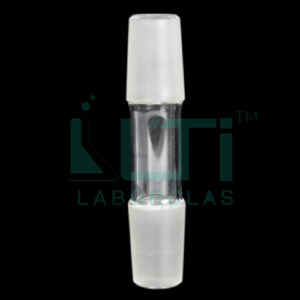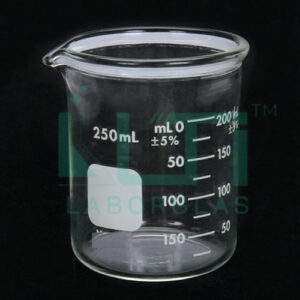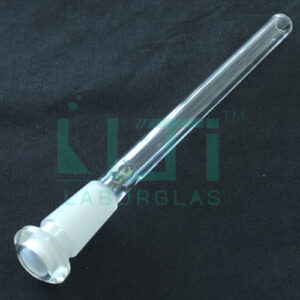- These Flasks comes with Ground Joint manufactured
- ASTM E-1403 type 1 specifications
- The Flasks are printed in white colour enamel
| PART No. | Capacity (ml) | Socket Size | Overall Height (mm) | Overall Dia (mm) | PACK Qty. |
| 5520-50 | 50 | 24/40 | 95 | 51 | 2 |
| 5520-100 | 100 | 24/40 | 110 | 64 | 2 |
| 5520-200 | 200 | 24/40 | 123 | 75 | 2 |
| 5520-250 | 250 | 24/40 | 130 | 85 | 2 |
| 5520-300 | 300 | 24/40 | 140 | 88 | 2 |
| 5520-500 | 500 | 24/40 | 160 | 105 | 2 |
| 5520-1000 | 1000 | 29/42 | 178 | 131 | 1 |
| 5520-1000-A | 1000 | 24/40 | 205 | 166 | 1 |
| 5520-2000 | 2000 | 24/40 | 178 | 131 | 1 |
Here are some general applications and uses for flat-bottom flasks with joints in accordance with ASTM standards:
- Chemical Synthesis: Flat-bottom flasks with joints are often used in chemical synthesis reactions. The joints allow for the attachment of other glassware, such as condensers, reflux systems, or addition funnels.
- Distillation: Distillation processes, which involve separating components of a liquid mixture based on differences in their volatilities, often use flat-bottom flasks with joints. The joints enable the connection of distillation columns, condensers, and receiving flasks.
- Sample Preparation: In analytical chemistry, flat-bottom flasks with joints can be used for sample preparation before analysis. This may involve processes like evaporation or concentration of solutions.
- Extraction: When performing extractions, where components are selectively removed from a sample, flat-bottom flasks with joints can be used with separatory funnels or extraction apparatus.
- ASTM Methods: Various ASTM methods may specify the use of flat-bottom flasks with joints for specific tests or analyses. For example, methods related to distillation, reflux, or specific sample preparation techniques may prescribe the use of such flasks.





